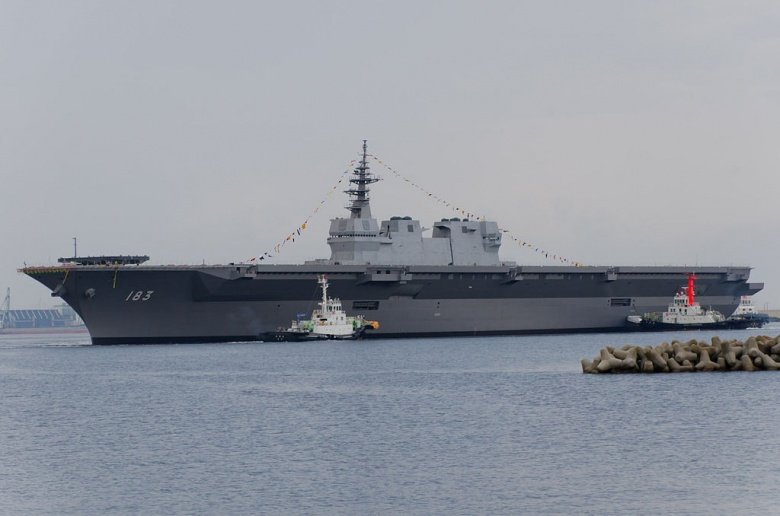The New Militarization of Japan
ARTICLE 9. (1) Aspiring sincerely to an international peace based on justice and order, the Japanese people forever renounce war as a sovereign right of the nation and the threat or use of force as means of settling international disputes.
(2) In order to accomplish the aim of the preceding paragraph, land, sea, and air forces, as well as other war potential, will never be maintained. The right of belligerency of the state will not be recognized.
Japanese Constitution
 |
| A mushroom cloud over the city of Hiroshima, taken on a reconnaissance plane that flew with US air force bomber Enola Gay that dropped the atomic bomb. Source:News Corp Australia |
The very thought of Japan militarizing their country again, after the colossal suffering caused by its entry into World War II by bombing Pearl Harbour and aligning itself with the Axis covenant of Nazi Germany, would have been unthinkable a decade ago. At that time the presence of military installations in Tokyo were unacknowledged. Military personnel serving at the headquarters of Japan's Defence Department couldn't show themselves in military uniform in public. Travelling from their homes to the military bases they would wear civilian garb, changing into their military uniforms once arrived at base.
Japanese civilians had suffered so intensely, the U.S. atomic attacks on Hiroshima and Nagasaki had been so horrific in the vast scope of their destruction, let alone the constant aerial fire bombings carried out by the Allies against Japanese cities and towns so complete in their unsparing ruination of the country the very thought of a Japanese military for offensive purposes was utterly unacceptable to the Japanese. The presence of a preventive, defensive military was conceivable but nothing more.
That has changed. Japan has no deficit in military hardware and highly advanced technical equipment, all labelled defensive, despite their clearly offensive capabilities. The Constitution of Japan, however, is clear, that Japan will refrain from ever maintaining an offensive capability. So the ideal writ in law and the reality seen in actual practise fail to align. And the reason for that is hardly a surprise. North Korea having sent medium-range ballistic missiles into the Sea of Japan could have resulted in a response.
That is, had it not been for one monumental deterrence. That North Korea is under the protective aegis of China. Relations between Japan and China are strained and at times volatile. Militant Japan's occupation of an unprepared and docile China in 1937 and Japanese brutalities and mass atrocities will never be forgiven by the Chinese. That Japan no longer exists, and nor does that China. The China now dominating the global scene is a confident, strong and influential China dominating the east militarily and the west financially.
Chinese nationalism is alive and well and continues to grow with each bellicose claim of ownership of the South and East China Seas. China has created artificial islands to host airbases, anti-aircraft missiles and the Chinese "coast guard" vessels patrolling areas China claims are its own, despite that they are areas disputed with its neighbours. China's declaration that even airspace is theirs and that permission is required to fly over said airspace has been challenged by U.S. fighter jets overflying "China's airspace".
Japan has built itself a responsive military machine. It has 18 diesel electric submarines, four helicopter destroyers (aircraft carriers), 43 destroyers and destroyer escorts, 25 minesweepers and training ships, fleet oilers, submarine rescue ships and its navy, the Maritime Self-Defence Force is the second-largest in Asia, one of the largest in the world, highly advanced technologically, growing continually. Japan is adding to its two 27,000-ton Izumo-class helicopter destroyers along with advanced U.S.-style Aegis class destroyers able to shoot down medium-range ballistic missiles.
/arc-anglerfish-arc2-prod-mco.s3.amazonaws.com/public/DNBQ4JGPCRHNBDPKZTYVWBU54Q.jpg) |
The 8,200-ton, 170-meter--long destroyers are equipped with the Aegis Baseline J7 combat system. (Courtesy of the Japan Maritime Self-Defense Force) |
Heavily dependent on sea transport, as a maritime nation Japan relies on the incoming transport of fuel oil and natural gas from the Middle East through the Strait of Malacca and the Formosa Strait. As a former protectorate-in-practise of the powerful United States of America, Japan could always depend on the back-up of the U.S. to protect its interests. Much has changed in that relationship since the Obama and Trump administrations, though the bonds remain firm.
The Trump White House, however, no longer guarantees its Sheriff role to its collegial nation-partners. With China clearly in the ascendancy in the region, South Korea, Japan, Australia and others dependent on the constancy of the United States to ride to their rescue has diminished and those nations must now look to themselves being fully responsible for their own defence. As the world turns.

Labels: China, Conflict, Defence, Japan, Militarization, Military, Offence

<< Home